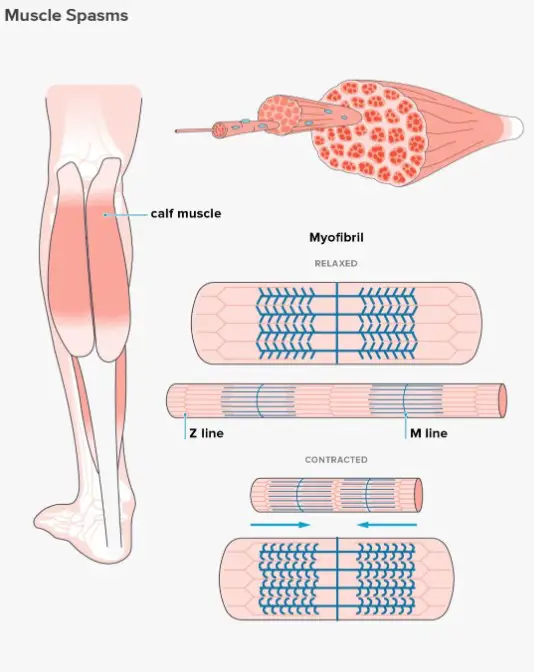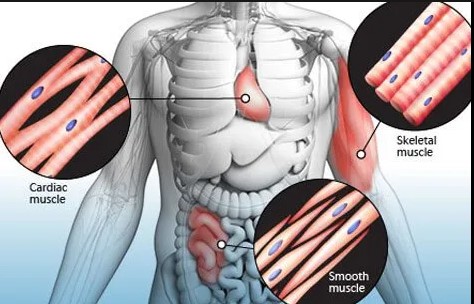Muscle movements are an integral part of our daily lives, enabling us to perform a vast array of activities from the most mundane to the highly complex. Yet, not all muscle movements are under our conscious control or even beneficial. Among these involuntary movements are twitches and spasms, two phenomena that, despite often being used interchangeably in casual conversation, have distinct characteristics, causes, and implications for our health.
A twitch is a brief, involuntary contraction of a muscle or a group of muscles, often visible under the skin and usually harmless. In contrast, a spasm is a sudden, involuntary muscle contraction that is typically more prolonged and can be painful. These differences in duration, sensation, and potential underlying causes mark the fundamental distinctions between twitches and spasms.
Understanding these involuntary muscle movements requires a closer look at their specific definitions, triggers, and effects on the body. Twitches, often resulting from stress, fatigue, or nutrient deficiencies, are usually benign and transient. Spasms, on the other hand, may indicate more serious conditions, from dehydration and muscle strain to neurological disorders, necessitating a broader discussion on their impact, management, and prevention.

Twitch Overview
Definition and Characteristics
A twitch refers to a quick, involuntary muscle movement. These movements are often visible under the skin and can happen in any part of the body. Muscle fibers contract and then relax, usually in a matter of seconds. Twitches are common and generally not a cause for concern.
Causes and Common Triggers
Twitches can be caused by a variety of factors. Some of the most common include:
- Stress and anxiety: High stress levels can trigger muscle twitches.
- Fatigue: Overworking the body can lead to twitches as the muscles try to recover.
- Caffeine and other stimulants: High intake can overstimulate the muscles.
- Nutrient deficiencies: Particularly lack of magnesium, calcium, and potassium.
- Exercise: After intensive workouts, muscles may twitch as they repair.
Spasm Overview
Definition and Features
A spasm, on the other hand, is a sudden, involuntary muscle contraction. These can last from a few seconds to several minutes. Unlike twitches, spasms can be painful and are often felt deeper in the muscle. They can restrict movement and significantly affect the area involved.
Causes and Typical Sources
Spasms can be triggered by a variety of sources:
- Muscle strain: Overuse or injury can lead to spasms.
- Dehydration: Lack of fluids affects muscle function.
- Electrolyte imbalances: Essential for muscle contractions, imbalances can trigger spasms.
- Poor circulation: Restricted blood flow can cause muscle spasms.
- Certain medical conditions: Like multiple sclerosis or spinal cord injuries.
Key Differences
Duration and Frequency
- Twitches are brief, lasting only a few seconds, and can recur over time.
- Spasms tend to last longer, from seconds to minutes, and might not happen as frequently.
Sensation and Visibility
- Twitches are usually visible and can be felt but are not painful.
- Spasms are deeply felt, can be quite painful, and may not always be visible as twitches are.
Underlying Causes
- The causes of twitches often relate to lifestyle factors like stress or nutrient deficiencies.
- Spasms can indicate more serious conditions or physical injuries.
Impact on Health
Twitch: Benign vs. Concern
Most muscle twitches are benign and don’t indicate a serious health issue. However, if twitches are persistent, widespread, or accompanied by other symptoms like weakness or loss of muscle, it could be a sign of a more serious condition. For example, conditions like ALS or multiple sclerosis may start with muscle twitches.
Spasm: Discomfort and Treatment
Muscle spasms can cause significant discomfort and impact daily activities. While often related to temporary issues like muscle strain or dehydration, persistent spasms require medical attention. Treatments might include:
- Hydration and electrolyte balance: Ensuring adequate fluid and mineral intake.
- Heat therapy: To relax tight muscles and improve blood flow.
- Physical therapy: Strengthening and stretching exercises to help prevent future spasms.
- Medication: In some cases, doctors may prescribe muscle relaxants or pain relief.

Diagnosis and Treatment
Identifying Symptoms
Recognizing when muscle movements like twitches and spasms are normal and when they might indicate a deeper issue is key. Common signs that should prompt further investigation include:
- Persistent or recurring twitches across various parts of the body.
- Spasms that cause severe pain or limit movement.
- Muscle movements accompanied by weakness, loss of coordination, or other neurological symptoms.
When to See a Doctor
Consulting a healthcare provider is crucial if:
- Twitches or spasms persist for more than a few days.
- You experience associated symptoms such as weakness or numbness.
- Home remedies do not alleviate the discomfort.
- The involuntary movements impact your daily activities.
Professional Diagnosis
A healthcare professional may employ several methods to diagnose the underlying causes of twitches or spasms, including:
- Medical history review and physical examination.
- Blood tests to check for nutrient deficiencies or electrolyte imbalances.
- Neurological tests to assess nerve health.
- Imaging studies like MRI or CT scans to look for any abnormalities in the muscles or nerves.
Managing Twitches
Home Remedies
For benign twitches, several simple strategies can help:
- Reduce caffeine and other stimulants.
- Ensure adequate hydration and balanced electrolyte levels.
- Rest adequately to avoid fatigue.
- Apply warm compresses to the affected area to relax muscles.
Medical Interventions
If twitches are symptomatic of an underlying condition, treatment may include:
- Supplements for nutrient deficiencies, particularly magnesium or potassium.
- Medications to manage symptoms of more serious conditions, like anticonvulsants for epilepsy or specific treatments for neurological disorders.
Addressing Spasms
Effective Treatments
Managing spasms often requires a more comprehensive approach:
- Heat therapy to ease muscle tightness and pain.
- Physical therapy can help strengthen and stretch muscles, reducing the risk of future spasms.
- Medication, such as muscle relaxants or anti-inflammatory drugs, to alleviate pain and improve mobility.
- Hydration and electrolyte supplements to address imbalances that may contribute to spasms.
Preventative Measures
To prevent spasms, consider:
- Regular stretching before and after physical activity.
- Adequate hydration, especially during exercise or in hot weather.
- Maintaining a balanced diet to avoid nutrient deficiencies.
- Modifying workouts to avoid overuse of specific muscle groups.
Prevention Strategies
Lifestyle and Diet
Adopting a healthy lifestyle can significantly reduce the risk of both twitches and spasms:
- Balanced diet: Ensure your diet is rich in fruits, vegetables, whole grains, and lean proteins. Include foods high in magnesium, potassium, and calcium to support muscle health.
- Limit stimulants: Cut down on caffeine and alcohol, which can trigger or exacerbate muscle twitches.
- Stay hydrated: Drink plenty of water throughout the day to maintain electrolyte balance and muscle function.
Exercise and Relaxation Techniques
Regular physical activity combined with relaxation methods can help manage stress and improve muscle health:
- Regular exercise: Incorporate a mix of aerobic, strength, and flexibility exercises into your weekly routine.
- Stretch regularly: Stretching can improve flexibility, reduce stiffness, and prevent muscle spasms.
- Stress management: Techniques such as yoga, meditation, and deep breathing exercises can reduce stress and its impact on muscle health.
Frequently Asked Questions
What causes muscle twitches?
Muscle twitches can result from a variety of factors including stress, fatigue, caffeine consumption, nutrient deficiencies (particularly in magnesium and potassium), and exercise. They are usually benign and temporary, often resolving without any intervention.
Can spasms indicate a serious condition?
Yes, while spasms can be caused by common issues such as muscle strain, dehydration, or mineral imbalances, they can also indicate more serious conditions. Persistent or severe spasms could be signs of neurological disorders, circulatory issues, or other underlying health problems, warranting professional medical evaluation.
How can I prevent muscle twitches and spasms?
Preventing muscle twitches and spasms involves maintaining a healthy lifestyle. This includes staying hydrated, ensuring a balanced diet rich in essential nutrients, managing stress, getting adequate rest, and incorporating regular exercise into your routine. Additionally, avoiding excessive caffeine and alcohol intake can also help reduce the occurrence of these involuntary muscle movements.
Are there effective treatments for spasms and twitches?
Treatment for spasms and twitches varies based on their underlying cause. For benign twitches, simple home remedies like rest, hydration, and nutrient supplementation are often effective. For spasms, especially those caused by muscle strain or imbalances, treatments may include physical therapy, medication for pain relief, or addressing any underlying medical conditions.
Conclusion
In summary, while muscle twitches and spasms may seem similar at first glance, they are distinguished by their duration, sensation, and underlying causes. Twitches are generally brief and benign, whereas spasms can be more prolonged, painful, and potentially indicative of a more serious condition. Understanding these differences is crucial for appropriate response and treatment.
Recognizing when involuntary muscle movements warrant a visit to the doctor is key to managing one’s health effectively. Whether dealing with a simple, transient twitch or a more concerning spasm, awareness, and proactive health management can significantly impact our overall well-being and quality of life.
